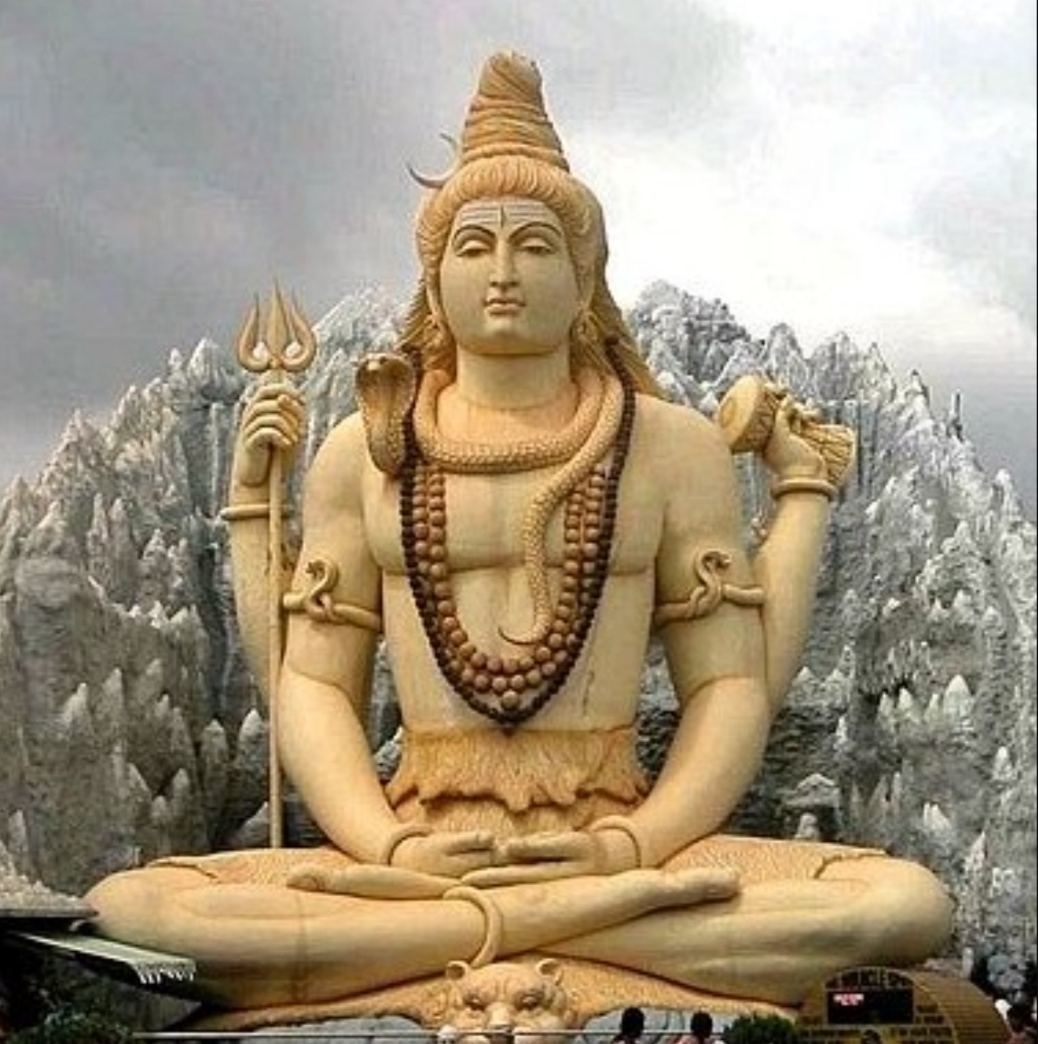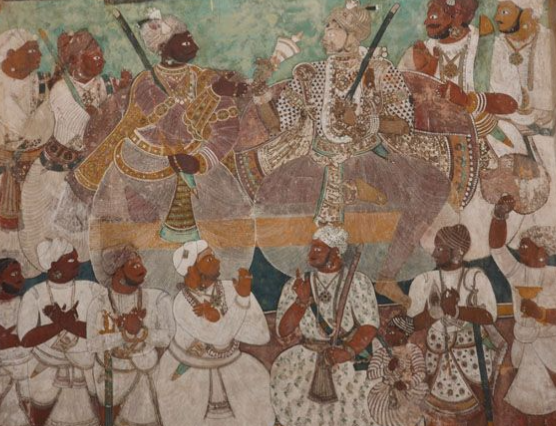|
Hindu Funeral
Antyesti (IAST: Antyeṣṭi, ), also known as Antima Samskara, Antya-kriya, Anvarohanyya, or as Vahni Samskara,Antayesti Cologne Sanskrit Digital Lexicon, Germany literally means "last sacrifice" or "final auspicious ceremony", and refers to the funeral rites for the dead in Hinduism, which usually involves cremation of the body. This rite of passage is the last samskara in a series of traditional life cycle Sanskara (rite of passage), samskaras that start from conception in Hindu tradition. The details of the Antyesti ceremony depend on the region, social group, gender and age of the dead.J Fowler (1996), Hinduism: Beliefs and Practices, Sussex Academic Press, , pp. 59-60 Etymology ''Antyeṣṭi'' (अन्त् ...[...More Info...] [...Related Items...] OR: [Wikipedia] [Google] [Baidu] |
Sikhism
Sikhism is an Indian religion and Indian philosophy, philosophy that originated in the Punjab region of the Indian subcontinent around the end of the 15th century CE. It is one of the most recently founded major religious groups, major religions and among the largest in the world with about 25–30million adherents, known as Sikhs. Sikhism developed from the spiritual teachings of Guru Nanak (1469–1539), the faith's first guru, and the nine Sikh gurus who succeeded him. The tenth guru, Guru Gobind Singh (1666–1708), named the Guru Granth Sahib, which is the central religious scripture in Sikhism, was their successor. This brought the line of human gurus to a close. Sikhs regard the Guru Granth Sahib as the 11th and eternally living guru. The core beliefs and practices of Sikhism, articulated in the Guru Granth Sahib and other Sikh scriptures, include faith and meditation in the name of the one creator (''Ik Onkar''), the divine unity and equality of all humankind, engaging ... [...More Info...] [...Related Items...] OR: [Wikipedia] [Google] [Baidu] |
Haridwar
Haridwar (; ; formerly Mayapuri) is a city and municipal corporation in the Haridwar district of Uttarakhand, India. With a population of 228,832 in 2011, it is the second-largest city in the state and the largest in the district. The city is situated on the right bank of the Ganges river, at the foothills of the Sivalik Hills, Shivalik ranges. Haridwar lies in Doab, doab region where people speak Kauravi dialect, khari boli, other districts of doab region lies in western Uttar Pradesh. Haridwar is regarded as a holy place for Hindus, hosting important religious events and serving as a gateway to several prominent places of worship. Most significant of the events is the Kumbha Mela, which is celebrated every 12 years in Haridwar. During the Haridwar Kumbh Mela, millions of pilgrims, devotees, and tourists congregate in Haridwar to perform ritualistic bathing on the banks of the Ganges to wash away their sins to attain ''moksha''. According to Puranic legend, Haridwar, along with ... [...More Info...] [...Related Items...] OR: [Wikipedia] [Google] [Baidu] |
Vibhuti
In Hinduism, ''vibhuti'' (), also called ''bhasmam'' or ''tirunīru'', is sacred ash made of burnt dried wood, burnt cow dung and/or cremated bodies used in Agamic rituals. Devotees of Shiva apply ''vibhuti'' traditionally as three horizontal lines across the forehead (also known as '' tripundra)'' and other parts of the body. According to the '' Shiva Purana'', the particles of ash which cling to the skin when ''tripundra'' is applied are to be considered to be individual lingams. The scriptures further state that ''bhasma'' purifies the soul and elevates the devotee of Shiva, and that works done without wearing ''bhasma'' are fruitless. There are various methods for the application of the ashes, according to the ''Shiva Purana'', and various mantras to be recited during application. Other uses Another meaning of ''vibhuti'' is a 'glorious form', in contrast with avatar, a reincarnation of Brahman. In the third chapter of the Yoga Sutras, which is called ''vibhuti-pada'' ... [...More Info...] [...Related Items...] OR: [Wikipedia] [Google] [Baidu] |
Sadhus
''Sadhu'' (, IAST: ' (male), ''sādhvī'' or ''sādhvīne'' (female), also spelled ''saddhu'') is a religious ascetic, mendicant or any holy person in Hinduism and Jainism who has renounced the worldly life. They are sometimes alternatively referred to as'' yogi'', '' sannyasi'' or ''vairagi''. Sādhu means one who practises a ' sadhana' or keenly follows a path of spiritual discipline.″Autobiography of an Yogi″, Yogananda, Paramhamsa, Jaico Publishing House, 127, Mahatma Gandhi Road, Bombay Fort Road, Bombay (Mumbai) – 400 0023 (ed.1997) p.16 Although the vast majority of sādhus are yogīs, not all yogīs are sādhus. A sādhu's life is solely dedicated to achieving mokṣa (liberation from the cycle of death and rebirth), the fourth and final aśrama (stage of life), through meditation and contemplation of Brahman. Sādhus often wear simple clothing, such as saffron-coloured clothing in Hinduism and white or nothing in Jainism, symbolising their sannyāsa (re ... [...More Info...] [...Related Items...] OR: [Wikipedia] [Google] [Baidu] |
Swami
Swami (; ; sometimes abbreviated sw.) in Hinduism is an honorific title given to an Asceticism#Hinduism, ascetic who has chosen the Sannyasa, path of renunciation (''sanyāsa''), or has been initiated into a religious monastic order of Vaishnavas. It is used either before or after the subject's name (usually an adopted religious name). An alternative form, swamini (), is sometimes used by female renunciates. The meaning of the Sanskrit root of the word ''swami'' is "[he who is] one with his Philosophy of self#Self in Eastern traditions, self" ( stands for "self"), and can roughly be translated as "he/she who knows and is master of himself/herself". The term is often attributed to someone who has achieved mastery of a particular Yoga, yogic system or demonstrated profound devotion (''bhakti'') to one or more Hindu gods. The ''Oxford English Dictionary'' gives the etymology as: As a direct form of address, or as a stand-in for a swami's name, it is often rendered ''Swamiji'' (als ... [...More Info...] [...Related Items...] OR: [Wikipedia] [Google] [Baidu] |
Guru
Guru ( ; International Alphabet of Sanskrit Transliteration, IAST: ''guru'') is a Sanskrit term for a "mentor, guide, expert, or master" of certain knowledge or field. In pan-Indian religions, Indian traditions, a guru is more than a teacher: traditionally, the guru is a reverential figure to the disciple (or ''wikt:शिष्य, shisya'' in Sanskrit, literally ''seeker [of knowledge or truth'']) or student, with the guru serving as a "counsellor, who helps mould values, shares experiential knowledge as much as Knowledge#Hinduism, literal knowledge, an Role model, exemplar in life, an inspirational source and who helps in the spiritual evolution of a student". Whatever language it is written in, Judith Simmer-Brown says that a tantra, tantric spiritual text is often codified in an obscure twilight language so that it cannot be understood by anyone without the verbal explanation of a qualified teacher, the guru. A guru is also one's spiritual guide, who helps one to discover the ... [...More Info...] [...Related Items...] OR: [Wikipedia] [Google] [Baidu] |
Hindu Denominations
Hindu denominations, ''sampradayas'', traditions, movements, and sects are traditions and sub-traditions within Hinduism centered on one or more gods or goddesses, such as Vishnu, Shiva, Shakti and so on. The term ''sampradaya'' is used for branches with a particular founder-guru with a particular philosophy. Hinduism has no central doctrinal authority and many practising Hindus do not claim to belong to any particular denomination or tradition. Four major traditions are, however, used in scholarly studies: ''Vaishnavism'', ''Shaivism'', ''Shaktism'' and ''Smartism''.Lance Nelson (2007), An Introductory Dictionary of Theology and Religious Studies (Editors: Orlando O. Espín, James B. Nickoloff), Liturgical Press, , pages 562–563 These are sometimes referred to as the denominations of Hinduism, and they differ in the primary deity at the centre of each tradition.SS Kumar (2010), Bhakti — the Yoga of Love, LIT Verlag Münster, , pp. 35–36. A notable feature of Hindu denom ... [...More Info...] [...Related Items...] OR: [Wikipedia] [Google] [Baidu] |
Hindu Grave In Bali
Hindus (; ; also known as Sanātanīs) are people who religiously adhere to Hinduism, also known by its endonym Sanātana Dharma.Jeffery D. Long (2007), A Vision for Hinduism, IB Tauris, , pp. 35–37 Historically, the term has also been used as a geographical, cultural, and later religious identifier for people living in the Indian subcontinent. It is assumed that the term ''"Hindu"'' traces back to Avestan scripture Vendidad which refers to land of seven rivers as Hapta Hendu which itself is a cognate to Sanskrit term ''Sapta Sindhuḥ''. (The term ''Sapta Sindhuḥ'' is mentioned in Rig Veda and refers to a North western Indian region of seven rivers and to India as a whole.) The Greek cognates of the same terms are "''Indus''" (for the river) and "''India''" (for the land of the river). Likewise the Hebrew cognate ''hōd-dū'' refers to India mentioned in Hebrew BibleEsther 1:1. The term "''Hindu''" also implied a geographic, ethnic or cultural identifier for people li ... [...More Info...] [...Related Items...] OR: [Wikipedia] [Google] [Baidu] |
Bamboo
Bamboos are a diverse group of mostly evergreen perennial plant, perennial flowering plants making up the subfamily (biology), subfamily Bambusoideae of the grass family Poaceae. Giant bamboos are the largest members of the grass family, in the case of ''Dendrocalamus sinicus'' having individual stalks (Culm (botany), culms) reaching a length of , up to in thickness and a weight of up to . The internodes of bamboos can also be of great length. ''Kinabaluchloa, Kinabaluchloa wrayi'' has internodes up to in length. and ''Arthrostylidium schomburgkii'' has internodes up to in length, exceeded in length only by Cyperus papyrus, papyrus. By contrast, the stalks of the tiny bamboo Raddiella, ''Raddiella vanessiae'' of the savannas of French Guiana measure only in length by about in width. The origin of the word "bamboo" is uncertain, but it most likely comes from the Dutch language, Dutch or Portuguese language, Portuguese language, which originally borrowed it from Malay langua ... [...More Info...] [...Related Items...] OR: [Wikipedia] [Google] [Baidu] |
Kāla (time)
Kala (, ) is a Sanskrit term that means 'time' or 'death'. As time personified, destroying all things, Kala is a god of death, and often used as one of the epithets of Yama. In Shaivism, Kala is known as the fiery avatar of Shiva, Kala Bhairava or Kalagni Rudra; and in Vaishnavism Kala is also associated with Narasimha and Pralaya. As applied to gods and goddesses, ' is not always distinguishable from ', meaning 'black'. Etymology Monier-Williams's widely used Sanskrit-English dictionary lists two distinct words with the form ': * ' 1 means "black, of a dark colour, dark-blue ..." and has a feminine form ending in ' – ' – as mentioned in 4–1, 42. * ' 2 means "a fixed or right point of time, a space of time, time ... destiny, fate ... death" and has a feminine form (found at the end of compounds) ending in ', as mentioned in the ' '. As a traditional Hindu unit of time, one ''kālá'' corresponds to 144 seconds. According to Monier-Williams, ' 2 is from the verba ... [...More Info...] [...Related Items...] OR: [Wikipedia] [Google] [Baidu] |
Yama
Yama (), also known as Kāla and Dharmarāja, is the Hindu god of death and justice, responsible for the dispensation of law and punishment of sinners in his abode, Naraka. He is often identified with Dharmadeva, the personification of ''Dharma'', though the two deities have different origins and myths. In Vedic tradition, Yama was considered the first mortal who died and espied the way to the celestial abodes; as a result, he became the ruler of the departed. His role, characteristics, and abode have been expounded in texts such as the ''Upanishads'', the ''Ramayana'', the ''Mahabharata'', and the ''Puranas''. Yama is described as the twin of the goddess Yami, and the son of the god Surya (sun) (in earlier traditions Vivasvat) and Sanjna. He judges the souls of the dead and, depending on their deeds, assigns them to the realm of the Pitris (forefathers), Naraka (hell), or to be reborn on the earth. Yama is one of the Lokapalas (guardians of the realms), appointed as the pro ... [...More Info...] [...Related Items...] OR: [Wikipedia] [Google] [Baidu] |
Rameswaram
Rameswaram (; also transliterated as Ramesvaram, Rameshwaram) is a municipality in the Ramanathapuram district of the Indian state of Tamil Nadu. It is on Pamban Island separated from mainland India by the Pamban channel and is about from Mannar Island, Sri Lanka. It is in the Gulf of Mannar, at the tip of the Indian peninsula. Pamban Island, also known as Rameswaram Island, is connected to mainland India by the New Pamban Bridge. Rameswaram is the terminus of the railway line from Chennai and Madurai. Together with Varanasi, it is considered to be one of the holiest places in India for Hindus and is part of the Char Dham pilgrimage. According to the Ramayana, Rama is described to have built a bridge from the vicinity of this town across the sea to Lanka to rescue his wife Sita from her abductor Ravana. The temple, dedicated to the Hindu god Shiva, is at the centre of the town and is closely associated with Rama and Shiva. The temple and the town are considered a holy pil ... [...More Info...] [...Related Items...] OR: [Wikipedia] [Google] [Baidu] |












